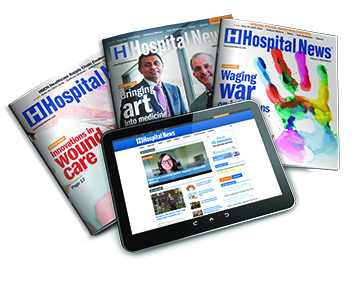By Robert DeLaet
In a new study, researchers at Lawson Health Research Institute (Lawson) have developed a simple screening method for improving the detection of delirium.
Delirium is defined as a severe confusional state that occurs due to an underlying physiological problem such as illness or injury. Older adults, especially those with multiple health issues or cognitive problems, are most at-risk. Patients with delirium can have a many different symptoms, including memory problems, hallucinations, disengagement from their surroundings and agitation, but the hallmark of delirium is problems with concentration and attention.
“In hospital, approximately 29 per cent of older acute medicine and surgery inpatients experience delirium. A huge challenge in improving delirium care is that it often goes undetected,” says Dr. Niamh O’Regan, a scientist at Lawson and a geriatrician at London Health Sciences Centre (LHSC). “This is a significant concern since late diagnosis can increase the duration and severity of delirium, and intensify poor outcomes.”
To address this challenge, Dr. O’Regan and a team of researchers set out to develop a simple algorithm for detecting delirium. The goal was to create an easy test that can be used daily by nursing staff to identify whether a patient is showing signs of delirium.
“While many delirium screening methods have been developed, there is little evidence to show what methods are feasible and effective in the acute care setting,” explains Dr. O’Regan. “A delirium screening method, or ‘cognitive vital sign,’ must be brief, simple and acceptable to both staff and patients.”
The team of researchers has therefore developed an algorithm that combines two preexisting screening methods known as “The Months of the Year Backwards (MOTYB)” and “Recognizing Acute Delirium as Part of Your Routine (RADAR)”. The MOTYB method has nurses ask patients to recite the months of the year in reverse order as a simple attention test. The RADAR test, originally developed by Dr. Philippe Voyer and a team of researchers at Université Laval, is based entirely on nursing observation and takes seven seconds to complete. In the Lawson researchers’ modified version of this test, nurses answer the following questions: 1) Is the patient drowsy? 2) Does the patient have difficulty following instructions? 3) Are the patient’s movements slowed down? 4) Are there any other indications of delirium such as hallucinations, paranoia or a sudden change in cognition, mood or behavior?
The team is currently testing the screening method, which combines MOTYB and RADAR, on the acute care for the elderly (ACE) unit at LHSC’s Victoria Hospital. They are testing whether this method is reliable, effective in detecting delirium and feasible for daily use by nursing staff on the ACE unit.
“We are currently working with nurses on the ACE unit to use this method as part of our research study,” adds Dr. O’Regan. “The response from the nursing team has been extremely positive as we work together to improve delirium screening and care.”
Patients who consent to the study will be screened for delirium using the algorithm but will also be tested by a geriatrician to validate the algorithm’s diagnostic accuracy. If patients test positive for showing signs of delirium, action will be taken based on clinical guidelines.
If successful, the team hopes to fully incorporate this screening method into clinical practice on the ACE unit. The team would then look to validate the method for use with other high-risk populations, such as older orthopaedic patients, and at other health centres across the province and country.
The project is being funded by an AMOSO Opportunities Fund grant.
Robert DeLaet is a Communications Consultant at Lawson Health Research Institute.




